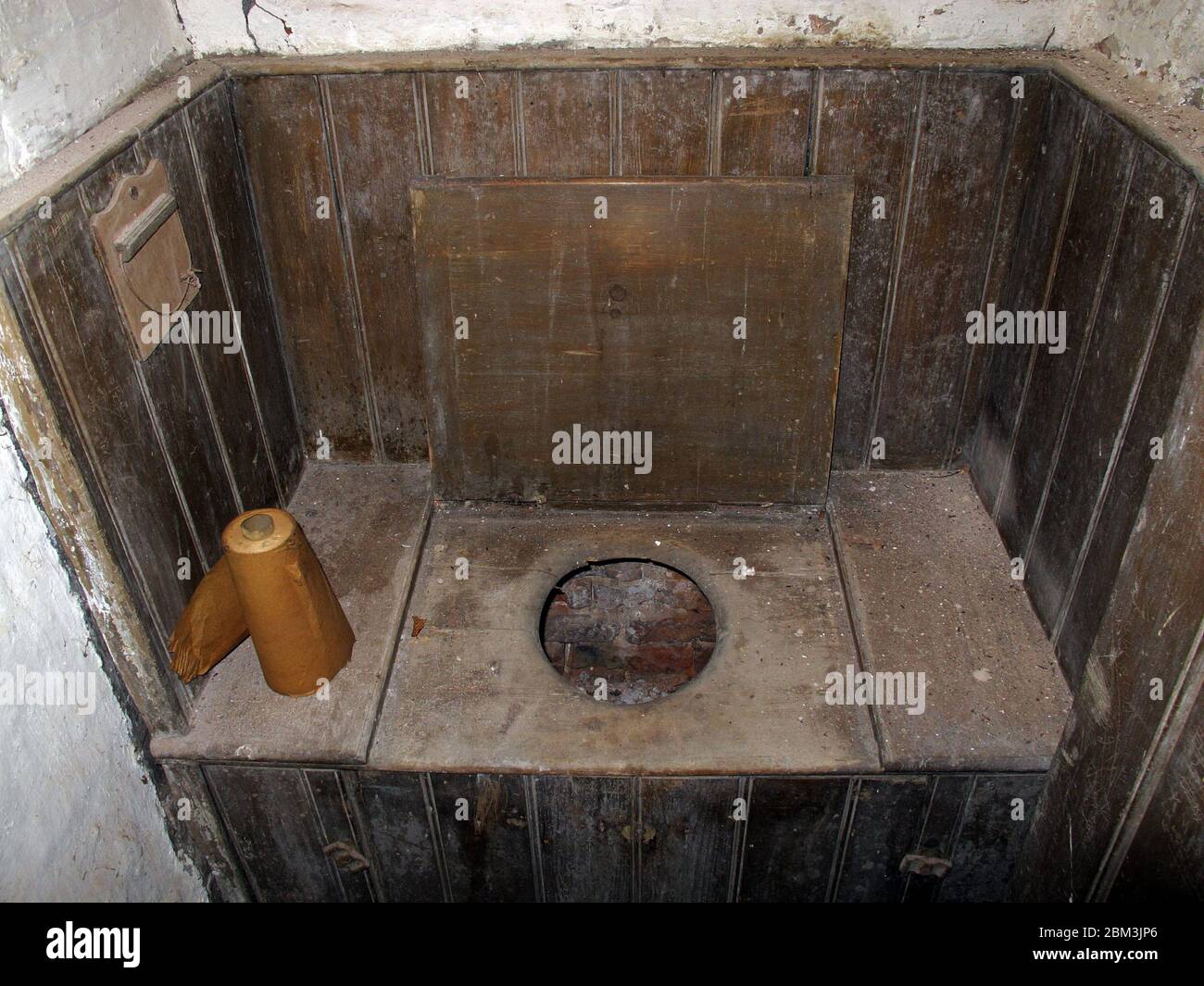Victorian basic wooden privy toilet, WC, Water Closet, with toilet paper

Image details
Contributor:
Tony Smith / Alamy Stock PhotoImage ID:
2BM3JP6File size:
28.6 MB (1.7 MB Compressed download)Releases:
Model - no | Property - noDo I need a release?Dimensions:
3648 x 2736 px | 30.9 x 23.2 cm | 12.2 x 9.1 inches | 300dpiDate taken:
18 June 2011Location:
Manchester, Lancashire, England, UKMore information:
Non-flushing water closets—portable pieces of furniture with removable containers for waste—became the standard in pre-Victorian Britain, though many households continued to rely on the backyard privy. The problem of waste disposal—whether from a chamber pot or from an overused hole in the ground—remained. The Victorians made the connection between unsanitary conditions and disease that the Elizabethans hadn't and developed municipal sewer systems to try to keep their cities cleaner. The problem was that they didn't have a good way of connecting individual households to the system. Non-flushing water closets could be dressed up, but their contents couldn't be taken out. In the late 18th and early 19th centuries (about the same time the sewers were built), English patents were granted for several different types of water-closet valves, but their flushing actions were pretty inefficient. The wall mounted cistern that became popular in the 1870s vastly improved the situation because it provided a large volume of water under more pressure. Water-closet bowls remained a problem, though, because their rudimentary traps didn't do a very good job of either letting waste go down the drain or keeping sewer gases out of the building. At first these bowls were made of earthenware and glazed with sometimes-elaborate designs. In 1885, Thomas Twyford built the first vitreous china toilet, inspiring competition from other notable English potteries such as Wedgwood and Doulton; it wasn't long before vitreous china became the standard for the fledgling industry. American inventors were also seeking solutions to the problem of building a sanitary water closet. As early as 1875, James Henry and William Campbell patented a plunger-type water closet; over the next 50 or so years more than 350 applications for patents for various types of water-closet designs were received by the U.S. patent office. In 1907